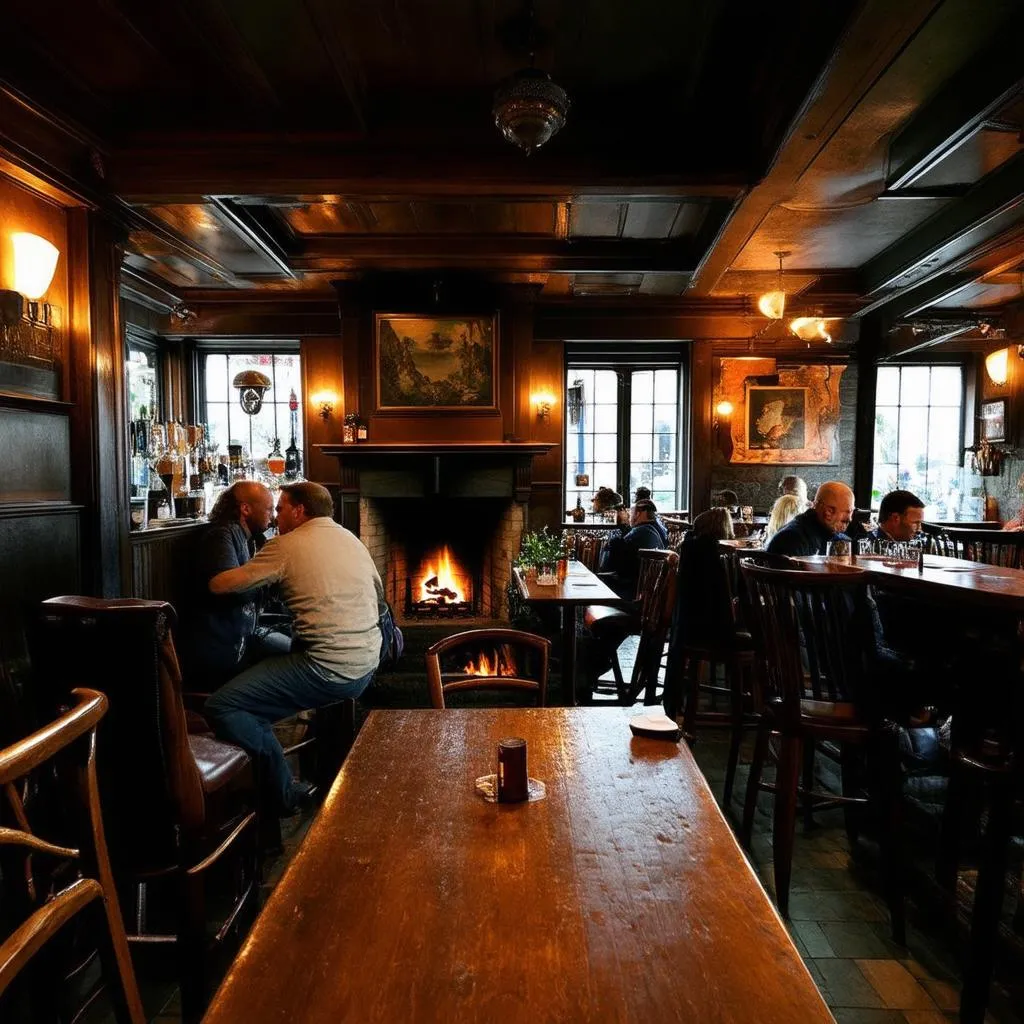“A good traveler has no fixed plans, and is not intent on arriving.” – Lao Tzu. This certainly rings true for those yearning to experience the Emerald Isle. Ireland, with its rolling green hills, rugged coastline, and charming villages, calls to the adventurer in all of us. But when is the best time to answer that call? 🤔
Deciphering Ireland’s Weather: A Season-by-Season Guide
Ireland’s weather is famously fickle, capable of switching from sunshine to showers in the blink of an eye. While this unpredictability adds to its charm, it’s helpful to have a general idea of what to expect.
Spring (March – May): A Gentle Awakening
Spring sees Ireland gradually awaken from its winter slumber. Temperatures begin to climb, reaching highs around 50°F (10°C), and the countryside explodes in vibrant hues. This is an excellent time for hiking amidst blooming wildflowers in Wicklow Mountains National Park or exploring the enchanting gardens of Powerscourt Estate.
Pros: Fewer crowds, cheaper prices, and the magic of spring blooms.
Cons: Can be chilly, especially in early spring. Rainfall is still a possibility.
Summer (June – August): The Emerald Isle in Full Bloom
Summer is peak tourist season in Ireland, and for good reason. The days are long, often stretching past 10 pm, and the weather is at its warmest, with temperatures averaging between 59-68°F (15-20°C). This is the perfect time to enjoy outdoor activities like kayaking along the Wild Atlantic Way, strolling through the vibrant streets of Dublin’s Temple Bar, or attending traditional music festivals in Dingle or Galway.
Pros: Warmest weather, long daylight hours, vibrant festivals and events.
Cons: Larger crowds, higher prices, and accommodations can book up quickly.
Autumn (September – November): A Tapestry of Gold and Red
As summer fades, Ireland transforms into a breathtaking tapestry of gold, red, and russet hues. Temperatures become milder, ranging from 41-55°F (5-13°C), making it ideal for cozying up in a traditional pub with a pint of Guinness. Autumn is also a magical time to experience the ancient Celtic festival of Samhain (Halloween) in its birthplace, Derry.
Pros: Stunning autumn foliage, fewer crowds, and a chance to experience Irish festivals.
Cons: Days are shorter, and the weather can be unpredictable.
Winter (December – February): A Time for Cozy Pubs and Festive Cheer
Winter in Ireland is a time for cozying up by roaring fireplaces in traditional pubs, enjoying hearty Irish stews, and soaking in the festive atmosphere. While temperatures hover between 36-46°F (2-8°C), and rainfall is more frequent, the magic of Christmas markets in Dublin and Galway, coupled with the dramatic beauty of the snow-dusted Cliffs of Moher, makes it an unforgettable experience.
Pros: Festive atmosphere, lower prices, and opportunities to experience Irish culture at its coziest.
Cons: Coldest and wettest time of year, limited daylight hours.
Planning Your Trip: Factors to Consider
While any time is a good time to visit Ireland, the “best” time depends on your individual priorities. Consider these factors:
- Budget: Traveling during the shoulder seasons (spring and autumn) offers the best value, with lower prices on flights and accommodations.
- Crowds: If you prefer to avoid the throngs of tourists, consider visiting outside of peak season (June-August).
- Weather: For the warmest weather and longest daylight hours, summer is ideal. But be prepared for the occasional shower!
- Interests: Specific events, festivals, or activities may influence your travel dates.
 Cliffs of Moher, Ireland
Cliffs of Moher, Ireland
FAQs: Answering Your Ireland Travel Queries
Q: What is the cheapest month to fly to Ireland?
A: Generally, flights are most affordable during the off-season, from November to March (excluding the Christmas and New Year period).
Q: Do I need to book accommodations in advance?
A: It depends. During peak season (summer), booking in advance is highly recommended, especially in popular tourist destinations like Dublin, Galway, and Killarney.
Q: How much does a week in Ireland cost?
A: A week-long trip to Ireland can cost anywhere from $700 to $2000 per person, depending on your travel style and preferences. Budget travelers can expect to spend less than $100 per day, while those seeking a more luxurious experience may spend upwards of $200 per day.
Travelcar.edu.vn: Your Gateway to Ireland
For more travel tips, itineraries, and inspiration for your Irish adventure, be sure to visit travelcar.edu.vn. Our comprehensive guide to “What is the best time to travel to Ireland” dives deeper into this topic, offering insider tips and advice. You can find it here: (https://travelcar.edu.vn/what-is-the-best-time-to-travel-to-ireland/).
 Traditional Irish Pub Interior
Traditional Irish Pub Interior
Embrace the Magic of Ireland
No matter when you decide to embark on your Irish adventure, the Emerald Isle is sure to captivate your heart with its stunning landscapes, rich history, and warm hospitality. Remember, the most important thing is to plan a trip that aligns with your preferences and budget, and be prepared to embrace the unpredictable beauty of this enchanting land. ☘️
Let us know in the comments below when you’re planning your trip to Ireland and what you’re most excited to experience!